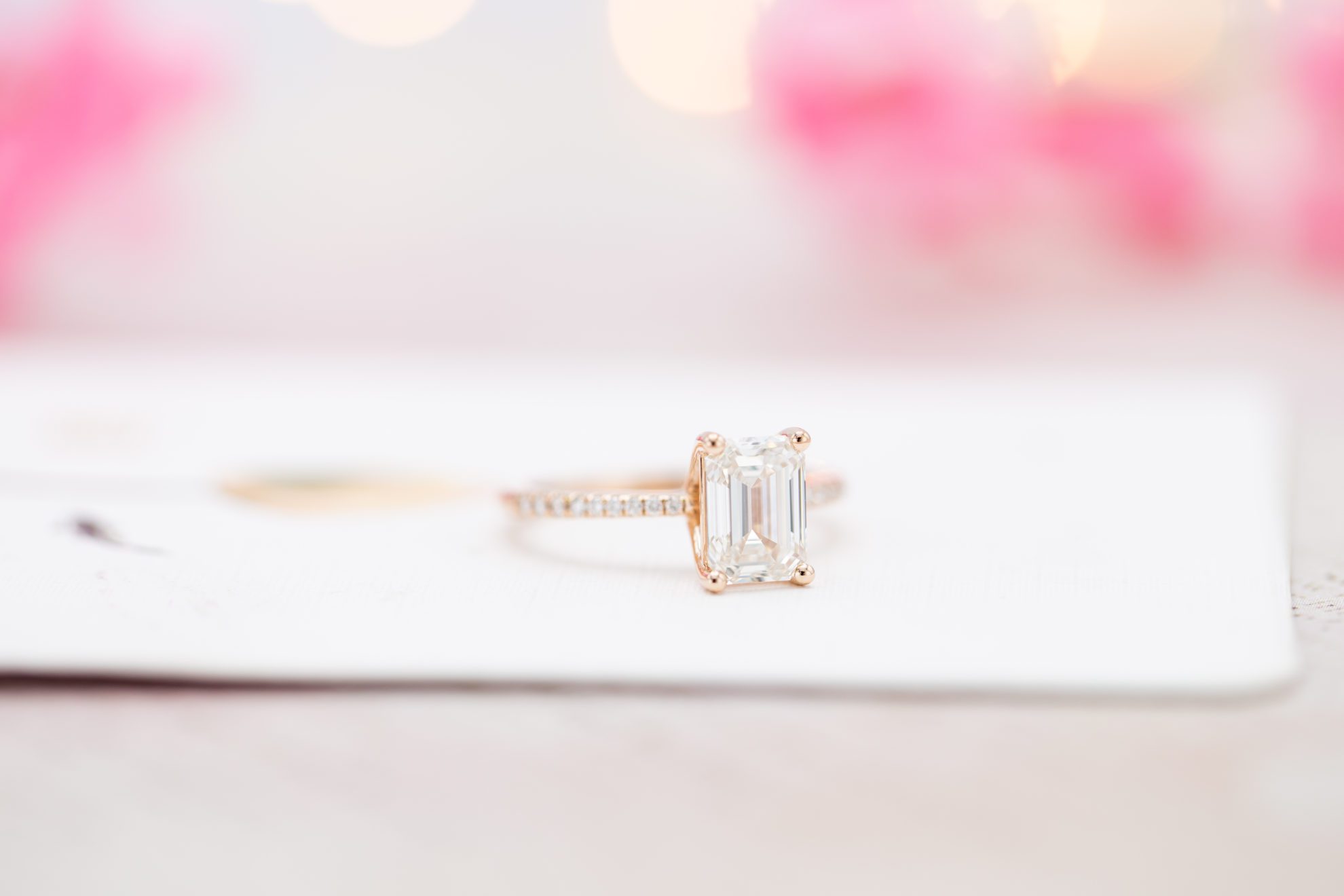Identifying Synthetic Diamonds
Although most manufacturers disclose their synthetic diamonds, some resellers don’t. Learn how to identify these lab-created diamonds.
4 Minute Read
To learn more about identifying natural diamonds, read about their inclusions.
CVD Diamonds
Chemical vapor deposition (CVD) diamonds come in sizes up to 3 carats, with a normal range of inclusions.
Identification
You can identify CVD diamonds fairly simply. They have a unique strain pattern that doesn’t resemble that of natural diamonds and strong red fluorescence. In addition, they lack the typical “Cape Line” at 415 nm on their absorption spectrum. Instead, they present a strong line at 737 nm.
HPHT Diamonds
GE developed the high pressure/high temperature (HPHT) method of growing diamonds. In 2003, a company called Gemesis (now known as Pure Grown Diamonds) improved the process and has created gem-grade diamonds. Producing a colorless stone takes longer than a yellow one, which is worth considerably more. These canary yellow gems tend to have higher clarity grades.
(UPDATE: Be aware that other manufacturers produce colored and colorless diamonds through the HPHT process).
Identification
Symmetry
With rough diamonds, one quick clue is the perfect symmetry of the rough crystals. You rarely find perfect form in natural gems, much less a lot of them.
Magnification
Like the GE product, Gemesis grows diamonds in…
Donald Clark, CSM IMG
Donald Clark, CSM founded the International Gem Society in 1998. Donald started in the gem and jewelry industry in 1976. He received his formal gemology training from the Gemological Institute of America (GIA) and the American Society of Gemcutters (ASG). The letters “CSM” after his name stood for Certified Supreme Master Gemcutter, a designation of Wykoff’s ASG which has often been referred to as the doctorate of gem cutting. The American Society of Gemcutters only had 54 people reach this level. Along with dozens of articles for leading trade magazines, Donald authored the book “Modern Faceting, the Easy Way.”
Related Articles
Destructive Gemstone Tests: Hot Point Testing
Identifying Inclusions of Specific Gems
Gemstone Visual Examination Quizzes
Destructive Gemstone Testing
Latest Articles
800 Years of Mogok: A Celebration in Tenuous Times
What is the Average Gemstone Faceting Yield?
Pyroxmangite Value, Price, and Jewelry Information
How to Identify Emerald Simulants and Synthetics
Never Stop Learning
When you join the IGS community, you get trusted diamond & gemstone information when you need it.
Get Gemology Insights
Get started with the International Gem Society’s free guide to gemstone identification. Join our weekly newsletter & get a free copy of the Gem ID Checklist!
